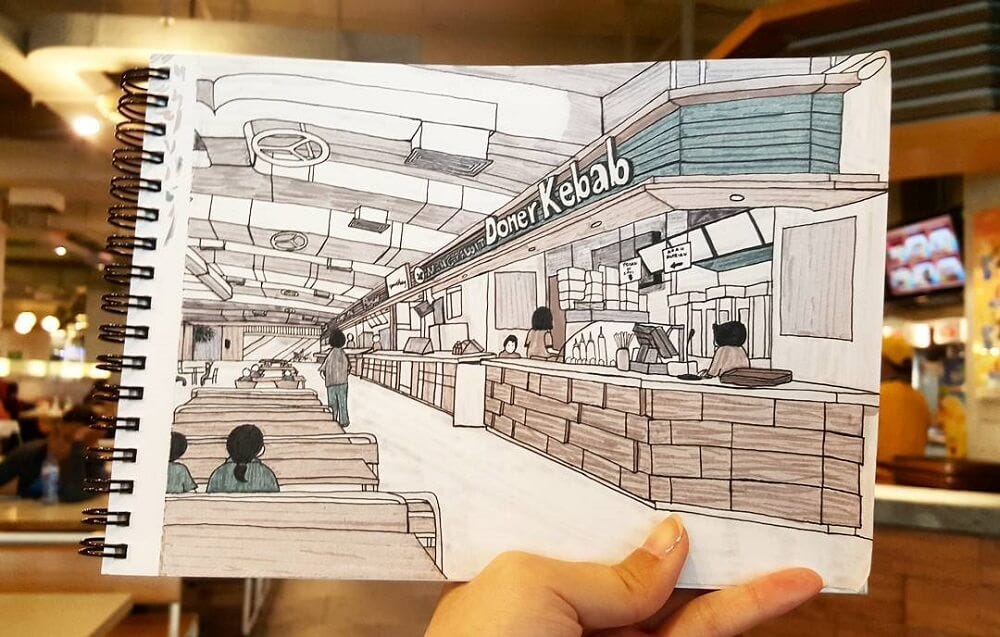Try your hand at a one point perspective drawing, by putting these ideas into perspective.
One point perspective or parallel perspective, is a style of drawing that has a vanishing point, this is where lines radiate from one point on a horizontal line and objects appear to become smaller. These objects are then rendered to create a 3D effect. With this in mind, one-point perspectives are often drawn as landscapes, cityscapes and interiors. But you don’t have to be an architect to draw these, here’s our round up of ideas to get you started.
1. Restaurant

Head to your favourite restaurant or café and try drawing what you can see. Draw your horizon, then dot out where the room naturally ends. After adding walls and roof details, this artist has included staff and guests at the table too, for a realistic feel of a moment in time.
2. House

Try adding a house in as the focal point for your one point perspective artworks. With this idea, the door is the vanishing point, the walls and garden edge are then rendered to create a third-dimensional look. To complete the look, add in a garden.
3. Urban aerial

Create a one point perspective from a bird’s eye view, with a piece of string. This technique is easier to create thin lines instead of using a thick ruler and perfect for those learning perspective drawing. Simply thumb tac the string in place to keep the focal point steady, then holding down the piece of string in one hand, draw lines using the string with the other hand. To learn how to draw an aerial one point perspective, check out our lesson here.
4. Street

You too can use a photo like this artist has and turn it into an urban sketching perspective drawing. Here, the vanishing point is clearly defined as the end of the street, a frontal plane shape can easily turn into the front of a car like this example.
5. Interior Design

Thinking of moving some furniture around? Have some fun learning perspective drawing and draw the room to see how it will look first! One-point perspectives are used by interior designers to show the structure of the room before planning how to best use the space. Start in pencil to create the floors and receding walls, windows and doors, then go in with black ink or a fine liner marker to establish the outlines and finish with coloured pencil or even light watercolour.
6. Room

Here the vanishing point isn’t as obvious as a road or a hallway, but the room still appears to become wider to the viewer. Using oblique lines as the guide from the vanishing point, will not only help create perspective, but be useful to turn into floor boards or tiles. As you add more squares for the walls and rectangles, you can add furniture and small details like a fruit bowl, chairs and books.
7. Subway

Tunnels in subways can create stunning one point perspectives. Try sketching out your horizon then dot the vanishing point, add rendering to make your escalator appear to have a third dimension, before adding in extra details.
8. Watercolour

Finished drawing? Add a touch of watercolour to your works to brighten them up, like this artist has. After adding in your final details, pop in touches of colour and bring your one point perspective artworks to life.
We hope this has inspired you to create a one point perspective artwork. Try our aerial one point perspective drawing with this project, or give one of these parallel perspective ideas a try for yourself, and show us what you create, #montmarteart or tag us @montmarteart on Instagram or Facebook.





























